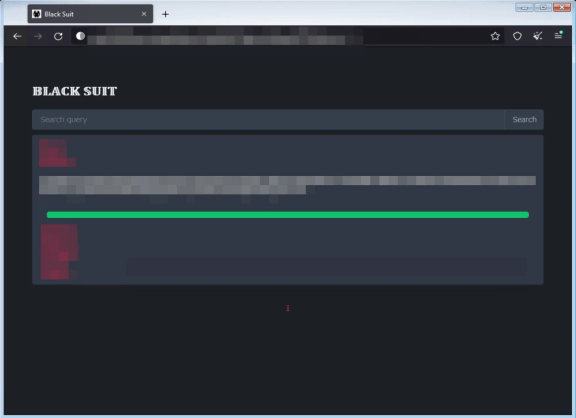Experts noticed that the new Linux ransomware BlackSuit has significant similarities with the Royal ransomware family.
Royal ransomware is one of the most notable ransomware families of 2022, it made the headlines in early May 2023 with the attack against the IT systems in Dallas, Texas.
The human-operated Royal ransomware first appeared on the threat landscape in September 2022, it has demanded ransoms up to millions of dollars.
The Royal ransomware is written in C++, it infected Windows systems and deletes all Volume Shadow Copies to prevent data recovery. The ransomware encrypts the network shares, that are found on the local network and the local drives, with the AES algorithm
In early May, the Federal Bureau of Investigation (FBI) and the Cybersecurity and Infrastructure Security Agency (CISA) released a joint Cybersecurity Advisory (CSA) to provide organizations, tactics, techniques, and procedures (TTPs) and indicators of compromise (IOCs) associated with this ransomware family.
According to government experts, the Royal ransomware attacks targeted numerous critical infrastructure sectors including, manufacturing, communications, healthcare and public healthcare (HPH), and education.
In May, multiple cybersecurity experts spotted a new ransomware family called BlackSuit, including Palo Alto Unit42 experts.
New #ransomware #BlackSuit targets Windows, #Linux. Extension: .blacksuit.
ReadMe file name: README.BlackSuit.txt.onion link: weg7sdx54bevnvulapqu6bpzwztryeflq3s23tegbmnhkbpqz637f2yd[.]onion/?id=
md5:9656cd12e3a85b869ad90a0528ca026e(nix), 748de52961d2f182d47e88d736f6c835(win) pic.twitter.com/v3SiLahREG— Unit 42 (@Unit42_Intel) May 3, 2023
In the same period, some researchers linked the new ransomware to the Royal ransomware.
Then Trend Micro researchers initially analyzed a Windows 32-bit sample of the ransomware from Twitter.
BlackSuit appends the .blacksuit extension to the name of the encrypted files, drops a ransom note into each directory containing the encrypted files, and adds the reference to its TOR chat site in the ransom note along with a unique ID for each of its victims.
BlackSuit ransomware operators also set up a data leak site.
Trend Micro researchers compared an x64 VMware ESXi version of Blacksuit targeting Linux machines with the Royal ransomware and discovered an extremely high degree of similarity between the two families.
“After comparing both samples of the Royal and BlackSuit ransomware, it became apparent to us that they have an extremely high degree of similarity to each other.” reads the analysis published by TrendMicro. “In fact, they’re nearly identical, with 98% similarities in functions, 99.5% similarities in blocks, and 98.9% similarities in jumps based on BinDiff, a comparison tool for binary files.”
The comparison revealed 93.2% similarity in functions, 99.3% in basic blocks, and 98.4% in jumps based on BinDiff.
The researchers mapped the command-line arguments accepted by BlackSuit, and noticed that it introduces different argument strings compared to Royal ransomware.
“The emergence of BlackSuit ransomware (with its similarities to Royal) indicates that it is either a new variant developed by the same authors, a copycat using similar code, or an affiliate of the Royal ransomware gang that has implemented modifications to the original family.” concludes the report.
“One possibility for BlackSuit’s creation is that, since the threat actors behind Royal (and Conti before it) are one of the most active ransomware groups in operation today, this may have led to increased attention from other cybercriminals, who were then inspired to develop a similar ransomware in BlackSuit. Another option is that BlackSuit emerged from a splinter group within the original Royal ransomware gang.”
Follow me on Twitter: @securityaffairs and Facebook and Mastodon
(SecurityAffairs – hacking, ransomware)
The post New Linux Ransomware BlackSuit is similar to Royal ransomware appeared first on Security Affairs.


